The breakfast category is a big opportunity for c-stores, with those who offer a wide product range rewarded with great customer loyalty.
It should come as no surprise that convenience store retailers tend to do well from breakfast. After all, most retailers get up before the sun rises to serve customers, so they naturally understand just how important it is to start the day with a good brekkie.
That’s not to say that it’s easy to cater for all the breakfast missions that customers could be on, as Ash Rham, manager of Budgens of Islington, London, points out. “Breakfast time is always an extremely busy time for us and many of our customers don’t have time to browse, so we have to make sure that everything they need is at the front of the store,” he says,
“We try to offer as many breakfast options as we can as we see it as a growing area for us. This includes our updated Otis pastry range, breakfast cereal pots display and our full English breakfast, served in on-the-go boxes and made by our Max’s Kitchen concession.”
Ash’s diverse range is reflective of the many different ways in which we Brits enjoy the first meal of the day. He adds: “Our store is already really good at providing shoppers with lunch and evening meal options, but we want to be just as good at breakfast, which means continually updating our offer with seasonal lines.”
Pratik Patel, owner of Jay’s Budgens in Crofton Park, south-east London, agrees that a good breakfast range is now essential for any c-store that wants to be a destination for shoppers.
He says: “Our local pastries and breakfast snacks do really well for us in the morning, as we get a lot of commuters and mums coming into the store on their way to work or school.
“We try to make the store inviting by making sure everything is clean, and we allow people to bring their bikes and buggies in to make things easier for them. This definitely helps drive our rush-hour trade.”
Pratik is proud of his eclectic breakfast offer, which ranges from yogurt pots to free-from granola and cereal pouches, but he believes convenience retailers have traditionally lagged behind the competition at breakfast time.
He adds: “For us, improving our range isn’t just about introducing hot food lines, it’s about making steady improvements to our entire breakfast offer in order to compete.
“That’s why we’ve made sure that we offer more gluten-free cereals and introduced kid-friendly lines such as Bear Alpha Bites that have less sugar than the usual brands.”
Health and convenience
Torben Sherwood, senior brand manager for Weetabix, argues that convenience and health are among the top trends driving purchasing at breakfast, particularly within cereal. “The breakfast occasion is increasingly competitive and the cereal category has to continue to stand out from the crowd. Consumers are now looking for a convenient and healthy way to start the day.”
Gaynor Grist, manager of Spar Hillcroft forecourt in Newport, South Wales, agrees that convenience is important. Her customers are often in a hurry and she sees the same people coming into her store every day for their breakfast.
“As well as those coming in for fuel, we get a lot of customers walking to the store from the nearby houses in the mornings,” she says. “You get to know what they will buy for breakfast, whether it’s the builders with their hot rolls and pastries, or the regulars with their breakfast bars and cup of coffee. Our customers are very loyal, especially in the mornings. Our bakery team only used to work in the mornings but now they are baking croissants and pain au chocolat throughout the day to keep up with demand.”
Hannah Morter, marketing manager for customer insight and category management at Country Choice, expects the breakfast sector to continue to grow in the coming years, with both healthy and indulgent products having a role to play in the category.
“At breakfast time we are seeing a 50:50 split between those consumers wanting healthier products and those wanting something more indulgent,” she says, “so our new product development does not focus purely on healthier ranges. Instead, we take a more rounded approach in order to develop products that appeal to both the calorie burners and the calorie watchers.
“Without a doubt there is a long- term trend towards healthier eating and retailers need to ensure their range is kept up-to-date with healthy alternatives. To that end, and to make sure their offer is all-inclusive, it makes sense, for example, for them to use lean bacon in the breakfast programme and there is no need for a spread in breakfast sandwiches.”
Barbara Clements, owner of Spar Preston in Weymouth, Devon, has worked hard to adapt her breakfast range to suit shopper trends. As well as offering a hot breakfast offer from her updated Daily Deli counter, Barbara and her team make sure that they suit all tastes with a good range of healthy impulse snacks for morning consumption. She says: “We are always going to have our older customers coming to the store looking for cereals or a bacon sandwich for breakfast, but we try hard to ensure that all our customers can find something they like.
“For example, we have fruit and yogurt pots at the front of the store within our snacking range and have a display of Belvita bars next to our coffee machine which have been very popular. I think most people are looking for a quick and healthy breakfast on a weekday.”
Jacqueline Barleycorn, founder of the Great British Porridge Co, has noticed that demand for healthier products are now more appealing as an everyday breakfast options.
She says: “More people are taking responsibility for their health through making better food choices. People are questioning ingredients and want to know exactly what they are eating. We’re seeing a rise in vegans and people wanting to avoid dairy.
“They are conscious about what sugar they are eating and also lots of people are looking for gluten-free products. But more and more people are looking for something that’s both healthy and ready to eat quickly.”
Barleycorn believes retailers and breakfast brands can take advantage of changing shopper habits: “Breakfast is definitely coming back into fashion, but sugary breakfast cereals aren’t the focus now. People want something that fills them up, provides balanced nutrition with nothing added that shouldn’t be there. The new breakfast consumer is savvy and has money to spend on quality, so there’s a huge opportunity for retailers if they get it right.”
Weetabix invests £10m in ‘customise’ marketing message
Weetabix has embarked on a new disruptive campaign with its retail partners this January, aiming to drive sales and category value of £10m.
The campaign – ‘Any-Which-Way-A-Bix’ – is designed to tap into the mass trend for customising food and aims to celebrate all the ways in which Britons enjoy their Weetabix, with consumer recipe inspiration on TV, on pack, online and in-store.
A dedicated TV advert will run as part of £10m-plus investment in the Weetabix brand. This activity will be supported with promotions, POS and across social media.
Commenting on the new campaign, Weetabix senior brand manager Torben Sherwood says: “With taste the most important aspect when it comes to choosing foods to buy, we know that people all over the UK are personalising their morning breakfast bowl with different fruits, nuts, yogurts, milks and many more exciting options.
“As the number one breakfast brand, Weetabix is perfectly placed to celebrate this trend, inspiring more people to start their day ‘Any-Which-Way-A-Bix’ they like. By tapping into this trend, we’re confident we’ll drive further love of the Weetabix brand, drive value in the cereal category and across other ‘topper’ categories such as fruit and yogurt.
“This is one of our biggest campaigns and builds on the success of our award-winning ‘Have you had your Weetabix?’ revival.”
The Any-Which-Way-A-Bix campaign is running across all Weetabix Original packs, including PMPs, now. The initiative’s TV advert launched nationwide on 1 January.
Coffee
It’s not just healthy products that are helping retailers and brands tap into breakfast. Morter points out that coffee can be a great footfall driver for food bought at breakfast time.
She explains: “With the majority of consumers wanting to buy a coffee with a cake or pastry, retailers should consider linking the two to maximise sales. The growth in coffee sales has led to a huge opportunity for complementary purchases across the day.
“At breakfast, croissants are the product most likely to be bought alongside a coffee. The growth in coffee sales, coupled with the fact that breakfast is the fastest growing out-of-home dining occasion, means getting the breakfast offer right is imperative.”
Ash recognises the importance of using his coffee machine to draw consumers to his store’s breakfast offer, which is why the Islington team recently upgraded the machine. He says: “We’ve just installed a new Costa Express machine right at the front of the store. It’s one of the first things any of our customers will see when they enter the shop.
“The hope is that the machine will serve as a reminder for our younger customers, in particular, to pick up a breakfast bar or any other breakfast item that they eat on the go, or take with them to have at work.”
Helena Blincow, marketing manager for Alpen, points out that cereal bars can be a particularly good snacking choice for Millennials. She says this group is the one most often looking for “a convenient and tasty way to start their day while on the move”.
On-the-go mission
Refresco UK commercial director James Logan believes this type of on-the-go breakfast is becoming the norm and that it offers retailers a great opportunity to boost sales.
He says: “Significant space should be given to the breakfast category, particularly on-the-go products, as it is the fastest growing area of the buoyant food-to-go market.
“Time-poor consumers are eating or drinking their breakfast outside of the home and prepared to pay more for the privilege. On-the-go products tend to be higher value compared with the shelf space they occupy and so can be more profitable for retailers than take-home breakfast items.”
Steve Bassett, owner of Londis Abbotsbury Road in Weymouth, Devon, is certainly reaping the rewards of offering more on-the-go breakfast items.
As a result of the success of his breakfast range, Steve is planning to extend his store’s hot food to go counter so he can dedicate more space to the category and provide his shoppers with even greater choice in the mornings.
He says: “There are such high margins in hot food to go and it adds that bit of excitement in the store. The team on our hot food counter work flat out to keep up with demand, offering everything from breakfast baps to protein bars and sweet pastries.
“It’s something we are known for in the area and people know that they can come in and order their breakfast, grab a coffee and then be on their way. I think the popularity of ready meals proves that people don’t have time to think about making food, especially in the mornings.”
Steve adds: “I think about five years ago customers used to go shopping and think about what they were going to eat in the next couple of hours. Now they are only thinking about the next 45 minutes and on-the-go breakfast items are a perfect fit for that mission, especially for younger people.”
Levi Boorer, customer development director of Ferrero, believes it is these time-poor young consumers who are driving growth across the breakfast occasion.
“Breakfast is one of the fastest-growing areas of the food market and it is an occasion that is rapidly evolving,” he says.
“Consumers are taking a much more vested interest in what they consume and how they prepare their meals. Hand in hand with this, we’re seeing the growth of the ‘Instagramable’ breakfast. The traditional breakfast is a thing of the past, as young consumers look for versatile ingredients to add a layer of excitement to their morning meal.”
Home or away
It seems that there is a divide between shoppers looking for an on-the-go breakfast versus those who want to eat it at home.
Logan points out that families and older people are most likely to consume breakfast at home, while those in their 20s and 30s are more likely to grab breakfast on the go or eat the meal at their desk.
Breakfast drinks may be key in bringing together these two distinct shopper groups, says Logan.
“Meal replacement breakfast drinks made up of juice, milk and oats are providing time-poor consumers with tasty, easy to drink alternatives to traditional breakfasts. Looking forward, there will be a blending of juices and milk products, as both mature markets look to innovate and provide consumers with the added nutritional benefits they are seeking.”
Ben Simons, owner of Londis Lechlade in the Cotswolds, has certainly noticed that breakfast drinks and other protein-enriched products are growing in popularity.
He says: “It wasn’t too long ago that we didn’t even sell these kind of products and now they are a regular staple for our customers. I think breakfast time hasn’t become any less diverse, but it is now about getting as much goodness in as quickly as possible.
“Breakfast drinks and bars are a great way to do this and are products that sell well throughout the day as people might pick them up for the following morning or even have them as an on-the-go snack.”
Beth Reeve, brand manager for Weetabix On The Go, is urging retailers to dedicate more space to breakfast drinks in order to take advantage of the breakfast-to-go trend. She says: “Breakfast drinks are the most impulsive part of the cereal category and continue to grow, so it’s still a great opportunity for retailers to tap into the demand for a chilled breakfast on the move.”
Create good mornings with Belvita biscuits
The UK breakfast biscuit market is now worth £79.3m (Nielsen MAT w/e 25 August 2018) and Susan Nash, trade communications manager at Mondelez International, believes products like Belvita not only meet consumer needs, but also offer a great opportunity to drive incremental value into the breakfast category.
She says: “With one of the highest repeat rates in the entire biscuits category at 60% (Repeat Buyers of Belvita Kantar 12 August 2018), Belvita has continued to lead the wellbeing and breakfast biscuit segments, through continued investment in new products and large-scale marketing campaigns. Each new product has a distinct purpose to bring new consumers to the Belvita brand through different tastes and textures.
“2018 saw the launch of Belvita Breakfast Soft Bakes blueberry, which offers an injection of taste from one of the UK’s most popular ‘superfood’ flavours – teaming soft and chewy baked biscuit, made from five of the finest wholegrains, with blueberries.”
Since the summer of 2018, Belvita has helped retailers drive sales with advice and POS material found on deliciousdisplay.co.uk. Part of the ‘Have you had your breakfast’ campaign, the free POS to be attached to retailers’ coffee machines is designed to help stores make the most of the cross-selling opportunity. Research showed that sales increased as much as 63% when POS was displayed in store (Convenience Store Shop Project 2018).
Merchandising
Morter believes breakfast products should be merchandised all day, allowing retailers to remind shoppers that their store is a great place to visit during the morning rush.
She adds: “Products should also have clear pricing, including multi-buy prices when applicable for take-home purchases. Promotions should be reliably run with discounts passed onto shoppers and advertised clearly with promotional POS. Core lines should occasionally be discounted as ‘special buys’ and placed in promotional dumpbins near the till point.”
To make the most of demand for take-home formats, Logan advises retailers to make sure their in-store displays encourage additional purchases.
“Take-home breakfast items should be located close to each other to encourage impulse purchase and remind people to stock up,” he says. “Weekends are when the take-home breakfast is most popular and so should be given more prominence.”
He adds: “For stores catering for the on-the-go market, it’s all about choice and convenience. Items should be clearly laid out front of store and easy to grab and pay for.”
With such an emphasis on speed and convenience, Steve is confident that investing in his breakfast offer will pay off. He says: “Lunch may still be the biggest mission for c-store shoppers, but breakfast keeps on getting bigger and bigger.
“We now have two coffee machines in the store and we’ve never offered so many grab and go breakfast items as we do now. I think that shows how important it is to provide customers with an exciting breakfast range and keep improving things.”




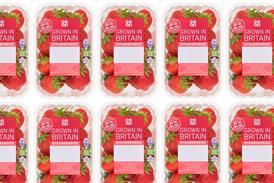
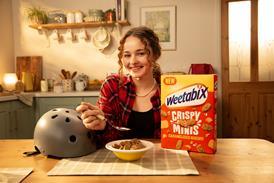

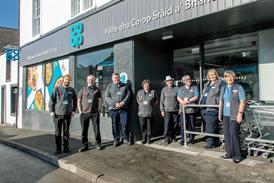
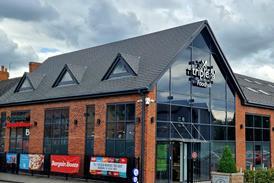
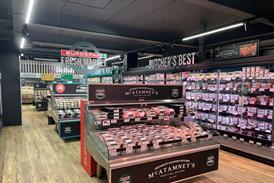

![WG-4003[58]](https://d2dyh47stel7w4.cloudfront.net/Pictures/274x183/4/5/1/353451_wg400358_6083.jpg)




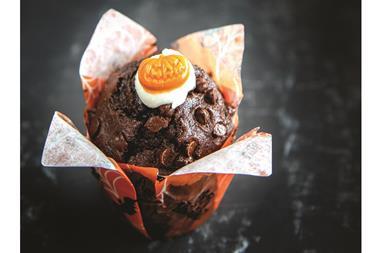
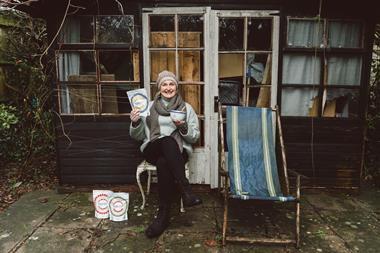

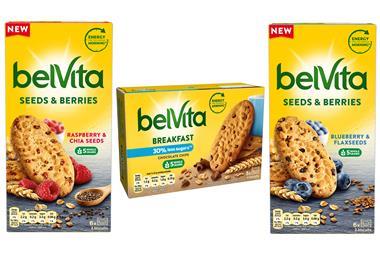
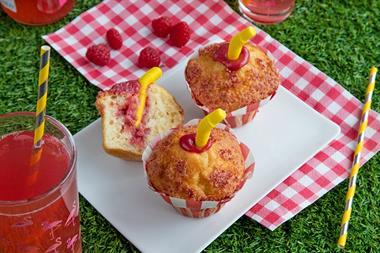
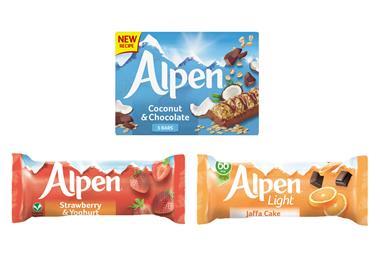
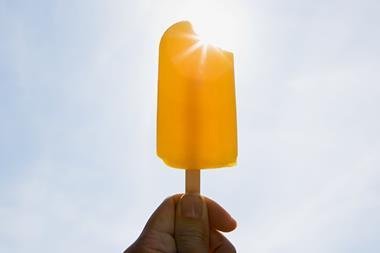

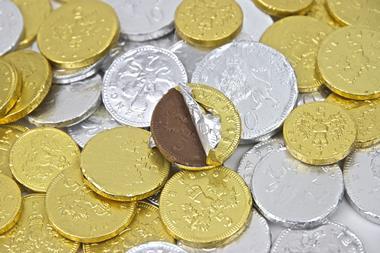
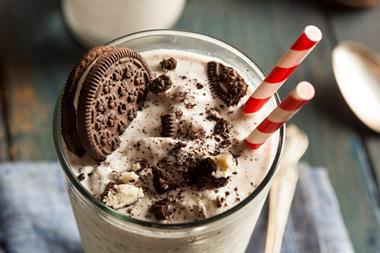

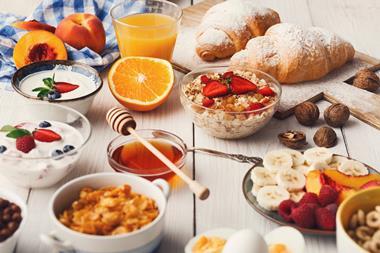
No comments yet